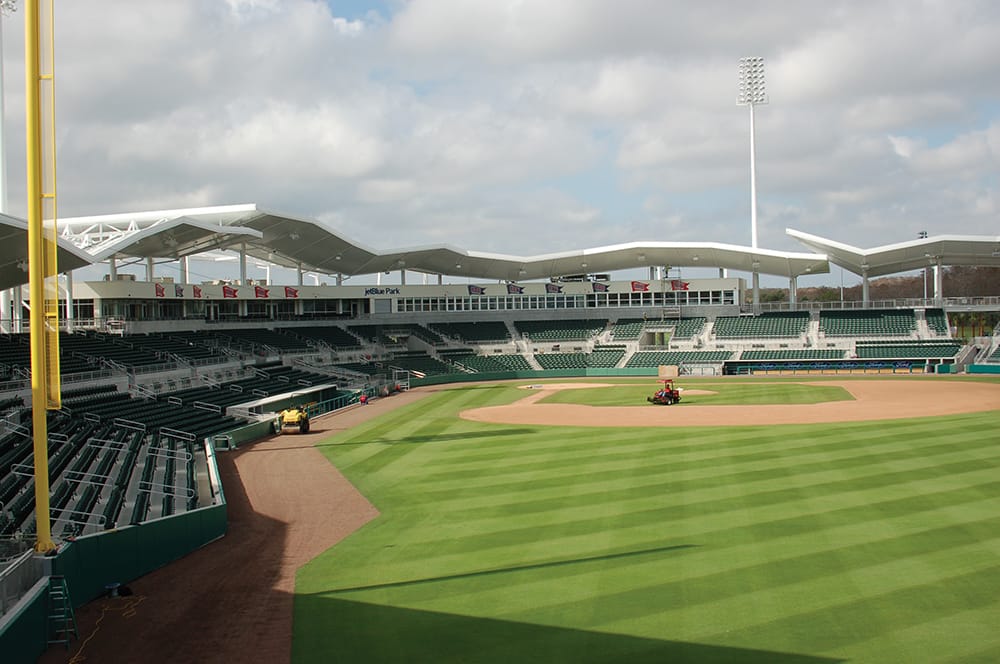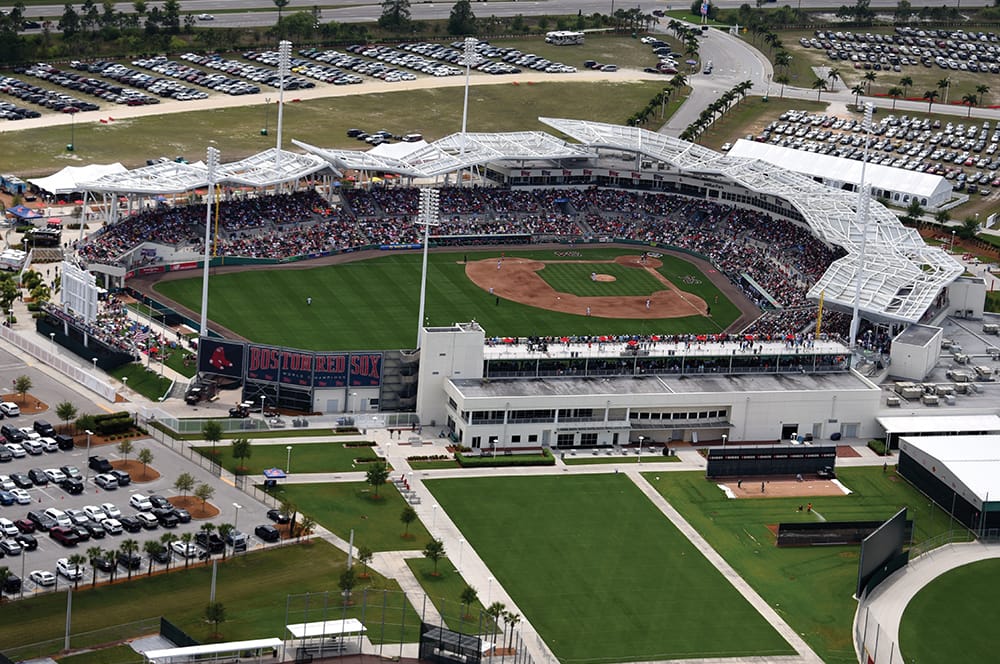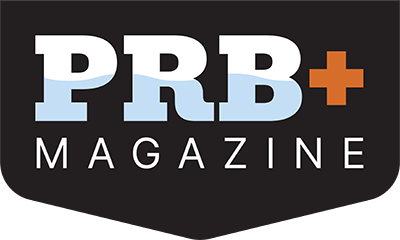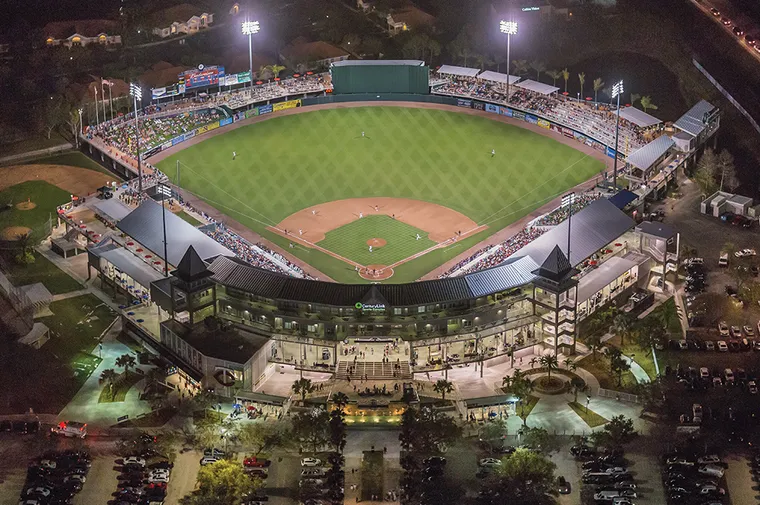Day-to-day communication keeps MLB coming back to Lee County facilities
Throughout 2023, one of the biggest stories in major league baseball has involved new rules with the addition of a pitch timer, bigger bases, and limitations around defensive shifts. The changes are designed to shorten the average length of games and encourage more viewers to tune in.
So, all season long, diehard fans and commentators alike have watched closely to see how the game they love has been transformed. That means other events like spring training, which usually dominates pre-season chatter, have taken a backseat. But for the parks departments that run MLB spring-training facilities—especially those overseeing more than one ballpark—it has been business as usual, namely because spring training is only one of the many duties they juggle.
“My office tries not to give them very many open windows to maintain grass,” Lee County Sports Development Director Jeff Mielke joked, referring to the parks teams at JetBlue Park and Hammond Stadium, the facilities he oversees. The former is the spring-training home of the Boston Red Sox, while the Minnesota Twins train at the latter park.
However, both stadiums also host teams from the Florida Complex League, which consists of rookie-level, minor league baseball teams. On top of that, Hammond Stadium simultaneously hosts a Single-A minor league team, the Fort Myers Mighty Mussels.
“Spring training isn’t the only thing that these facilities do,” Mielke says. “So, not only are we hosting the minor league components for each club, but we also have over 200 days of amateur baseball tournaments. It literally is a year-round process for these guys.”
Year-Round Maintenance
Thus, year-round operations require year-round maintenance. Josh Brooks, JetBlue Park’s Parks and Recreation Manager, employs 12 full-time workers, but during spring training, he either hires temporary staff or pulls workers from nearby facilities. Similarly, Hammond Stadium maintains 13 maintenance full-timers.
At a single location, double-digit maintenance-staff numbers may sound like a lot, but considering the size of each stadium, the workforce is warranted. JetBlue Park seats 11,000 fans. Hammond Stadium holds 7,500 fans and sits within the Lee County Sports Complex, a multiuse recreational property that also includes five additional playing fields and the Twins Player Development Academy. Within each stadium, there’s plenty to keep up to snuff.

The Red Sox moved to JetBlue Park when it opened in 2012, attracted by the “much larger facility,” Mielke says. Prior to that, the team trained at City of Palms Park.
“Their original site in Fort Myers was a single downtown stadium with a field attached to it, where only the big leaguers played. The minor leaguers were seven or eight miles down the road at another complex,” Mielke explains. “They had split everything: split training, split commissary, split cleaning crews. So, it was not ideal.”
Soon after the Red Sox moved, Hammond Stadium, home to the Twins since 1991, underwent a $42-million renovation to keep parity. Among the features added were fan amenities like a boardwalk on the outfield wall and shaded seating, as well as various player amenities.
Needless to say, there are many moving parts, and in hosting highly visible teams and thousands of fans, there’s certainly more pressure to keep each stadium in working order than with the average parks the team encounters.
“Every single day, our parks and rec team is working with the ball clubs to make sure that the fields are prepped correctly, that the equipment has been moved from field to field. Really, it’s your day-to-day facility use, much like a Major League Baseball stadium is,” Mielke says.
But the foundation that underpins the MLB’s relationship with Lee County is less about specs on the field and is more focused on communication behind the scenes.
A Winning Partnership
When it comes to prepping stadiums for MLB teams, it’s helpful to have a rhythm. Mielke says that, though each club has its nuances, the teams’ needs are quite similar. The major shifts in requirements are determined more by the time of year.
“What their focuses are in February is much different than what their focus is in April, when they have the extended spring, and then what their minor leaguers are doing in the summer,” Mielke says. “Our parks team maintenance guys have adjusted to whatever the teams need.”
Aiding the parks and recreation teams’ agility is a perfect balance of communication and independence. Mielke says there’s “less involvement in the minutiae of their arrangements,” and the parks essentially step aside once the space, equipment, and necessary setups are complete.
In line with Mielke, Brooks confirmed that the teams have very set routines that are managed internally, especially concerning exclusive-use areas of the ballparks, where nutrition plans and meals are set up.
The well-calibrated balance between the clubs and the grounds teams is one that MLB appreciates.

“The partnership and friendship we share with Lee County is like no other in baseball,” says Shawn Smith, General Manager of Florida Operations and JetBlue Park at Fenway South. “Their work ethic, professionalism, and results are critical in our efforts towards our goals of winning our tenth world championship and creating lifelong memories for our guests.”
Even with seamless logistics in place, however, there are still details that are essential for successful relationships. On the technical side, Mielke says both the Twins and the Red Sox have 30-year lease agreements until the 2040s.
And, on a daily basis, leadership across various levels interfaces. Brooks connects regularly with his counterpart at Hammond Stadium, and both parks and recreation managers work with their respective club’s liaison. Brooks says he works with Smith frequently.
When they touch base, some of the more pressing issues include times that the teams need to get on and off the field, and any special arrangements that must be made, such as when a major league player needs to use the ballpark for rehabilitation.
Mielke says Lee County leadership also meets with Red Sox and Twins leadership at least once annually to discuss active projects and capital-improvement funding.
That aside, the teams at both Hammond Stadium and JetBlue Park have their systems down, guided by clear communication with MLB and operational excellence on the ground.
Attracting Major League Teams
From time to time, and not just in baseball, there are major league teams that weigh relocation. For instance, the NFL’s Las Vegas Raiders made headlines in 2020 after leaving Oakland. In the MLB, the Oakland Athletics are also leaving Oakland for Las Vegas. Though these decisions can be economically challenging for the cities left behind, their new homes have much to gain.
Some parks departments may find themselves in a municipality that hopes to attract a major team in search of new home turf. To boost their chances, there may even be plans to construct a new recreational facility without a team attached. Mielke cautions there’s a lot to consider before moving to build a stadium.
Top of the list, he says, local leadership buy-in is non-negotiable, and municipalities must have clear objectives for whatever facility is built, be it sports tourism on weekends or better infrastructure for local recreational sports. He adds that the vetting process should be incredibly thorough, complete with in-depth business plans, Pro Formas, and even input from third-party consultants.
Then, it’s all about funding. Mielke has seen cities build substantial recreation centers that target sports tourism, but the centers don’t have any significant use between major events.
“The revenue streams to maintain it in perpetuity are super important,” he says. “Once you’re in, you find ways to maximize the everyday use of that facility for the good of the community, whether it’s citizen use or generating economic impact through tourism. Who’s using it Monday through Thursday, and can you keep the lights on?”


